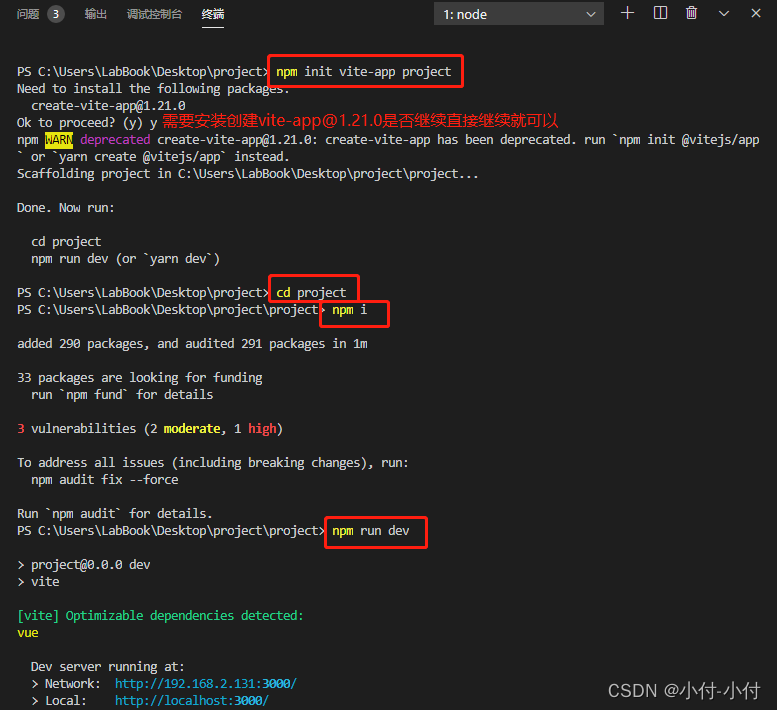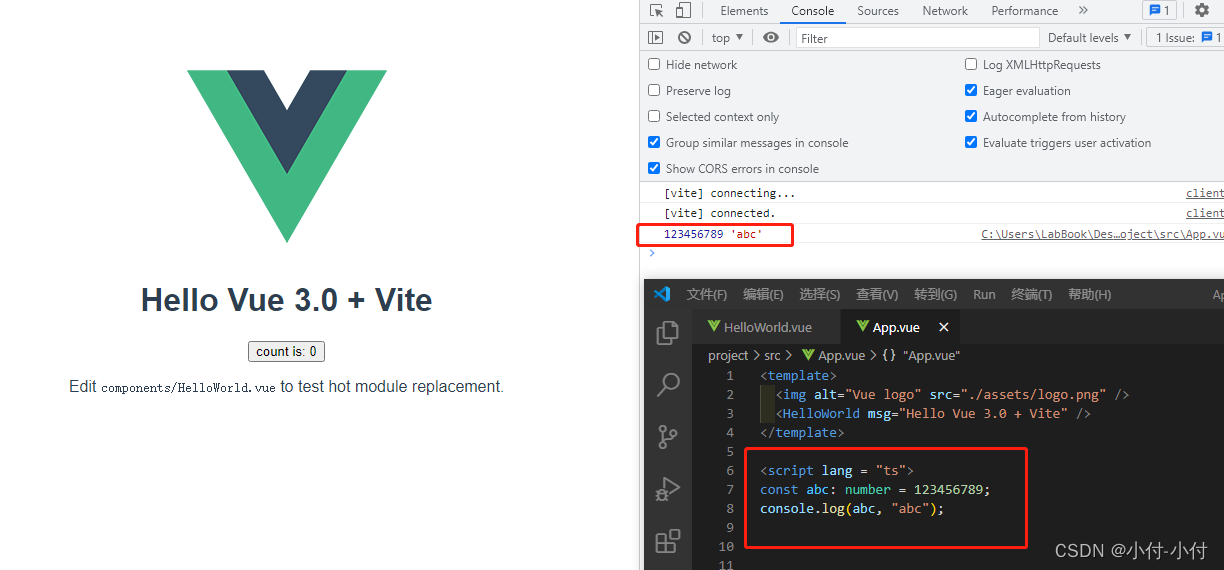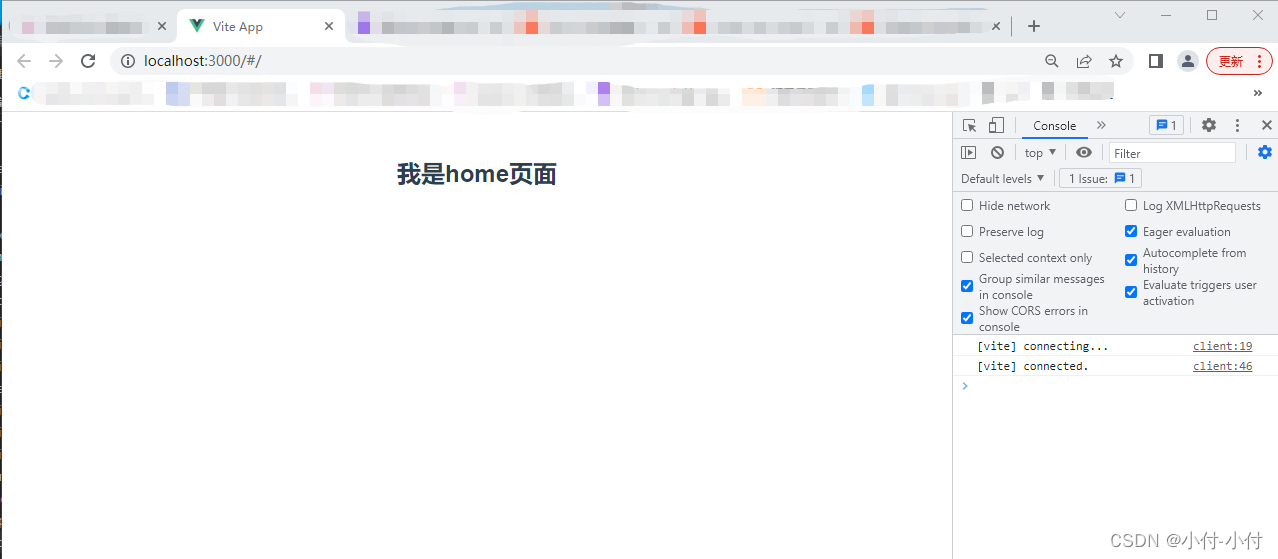vite搭建与使用
小付-小付 人气:0实际开发中编写的代码往往是不能被浏览器直接识别的,比如ES6,TypeScript,Vue文件等。所以此时我们必须通过构建工具来对代码进行转换,编译,类似的工具有webpack,rollup,parcel.但是随着项目越来越大,需要处理的javascript呈指数级增长,模块越来越多。构建工具需要很长时间才能开启服务器,HMR也需要几秒钟才能在浏览器反应过来。所以出现了vite。
提示:vite仅支持vue3.0+的项目,也即是说我们无法在其中使用vue2.x
1.安装:
npm init vite-app //项目名字 cd 项目名字 //进入项目 npm i //安装依赖 npm run dev //打开项目

2.在vite项目中使用TypeScript
vite完全可以支持Typescript,不需要任何配置,只需要直接引入ts即可。
<script lang = "ts"> const abc: number = 123456789; //定义一个abc类型是数字,为什么这么定义可以去看一下Typescript的数据类型 console.log(abc, "abc"); </script>

3.vite项目使用less sass scss
安装 less:npm install less less-loader -D
安装 sass:npm install sass node-sass sass-loader -D
安装好之后在<style lang="less" scoped></style>标签上面直接就可以用

4.vite打包
npm run build

5.下面就来创建一个标准的项目


安装路由:npm install vue-router@4(这里我是指定安装的版本)
在src文件夹下面建一个router的文件夹 里面放一个index.ts的路由文件,内容如下:
import { createRouter, createWebHashHistory } from 'vue-router'
const routes = [
{
path: '/',
name: 'Home',
//如果没有在.d.ts文件中定义,在这里引入路径时加后缀名.vue是会报错的
component: () => import("../pages/home/index.vue"),
children: [
{
path: '/news',
name: 'Hews',
component: () => import("../pages/news/index.vue")
}
]
},
]
const router = createRouter({
history: createWebHashHistory(),
routes,
})
export default router;App.vue文件内容如下:
<template>
<router-view />
</template>
<script>
import { defineComponent, onMounted } from "vue";
export default defineComponent({
name: "App",
});
</script>在src文件夹下面建一个后缀名为.d.ts的文件夹,内容如下:
declare module "*.vue" {
import { ComponentOptions } from "vue";
const componentOptions: ComponentOptions;
export default componentOptions;
}
declare module "*.svg";
declare module "*.png";
declare module "*.jpg";
declare module "*.jpeg";
declare module "*.gif";
declare module "*.bmp";
declare module "*.tiff";
declare module "lodash";
declare module "@/api/*";
两个文件夹内容大致一样,在这里就只说一个home,
home文件夹下面的index.vue里的内容如下:
<template>
<div>
<h1>我是home页面</h1>
</div>
</template>
<script lang="tsx"></script>
<style lang="less" src="./index.less" scoped></style>home文件夹下面的index.tsx里的内容如下:
import { defineComponent } from "vue";
export default defineComponent({
name: "Home",
})加载全部内容